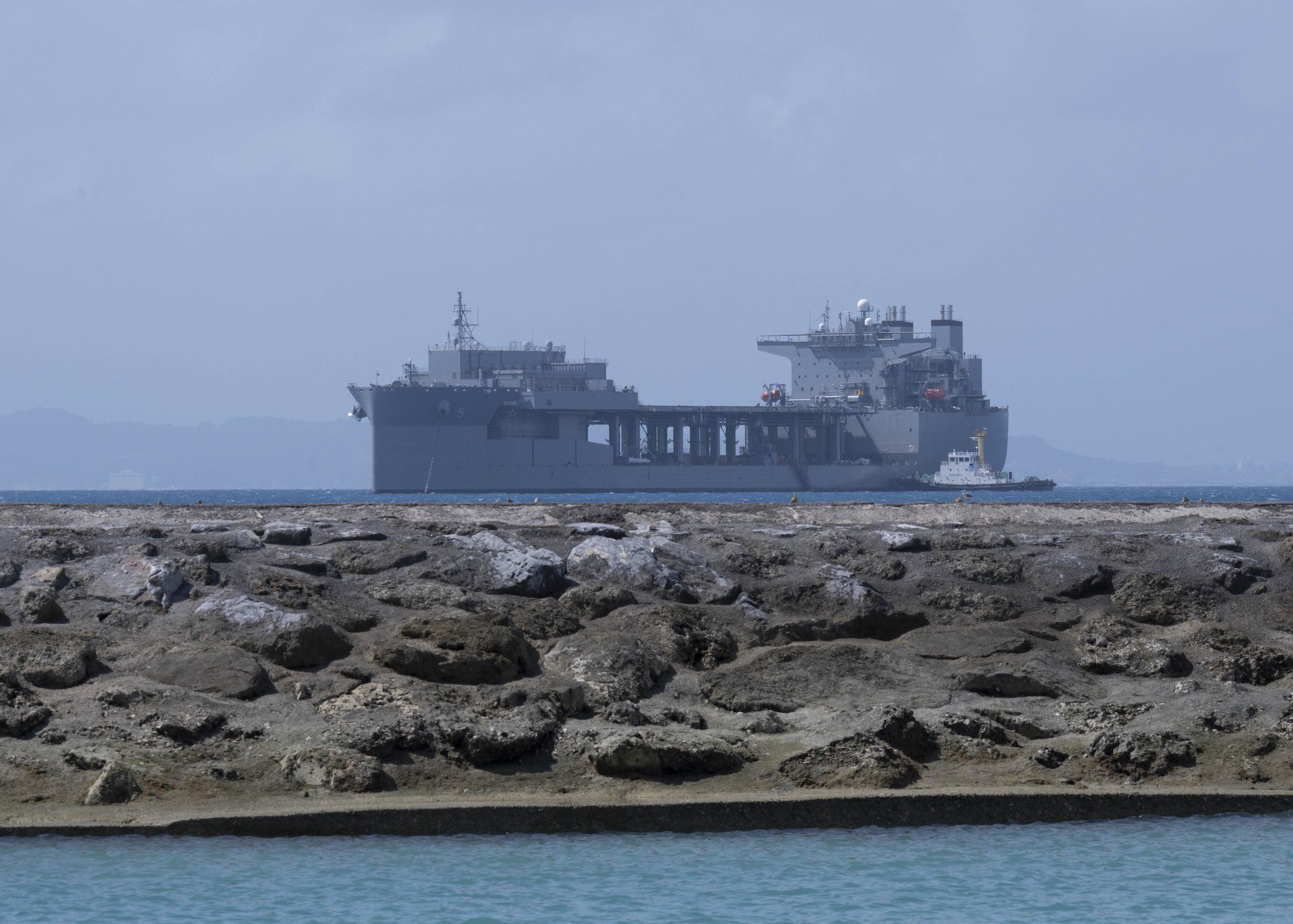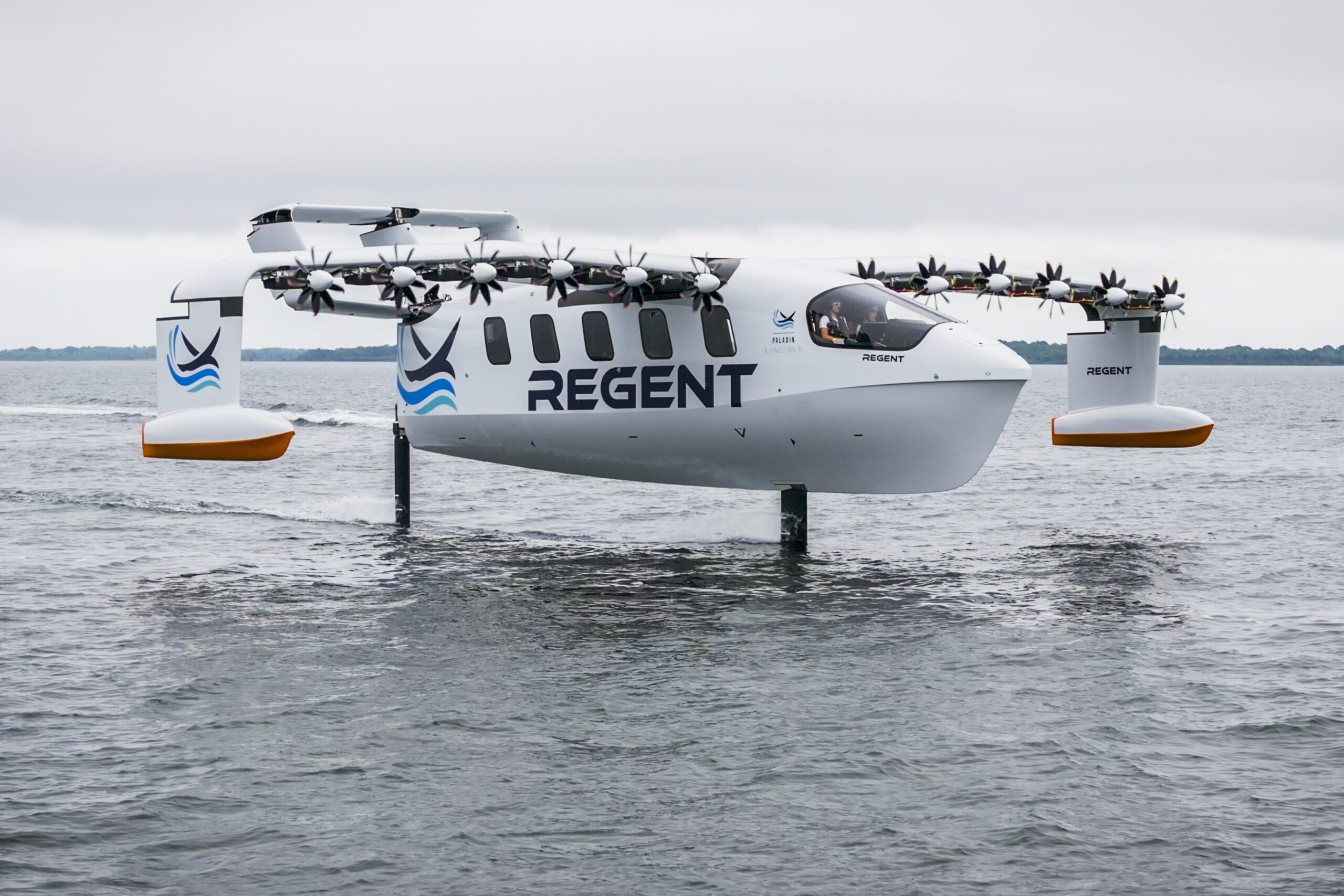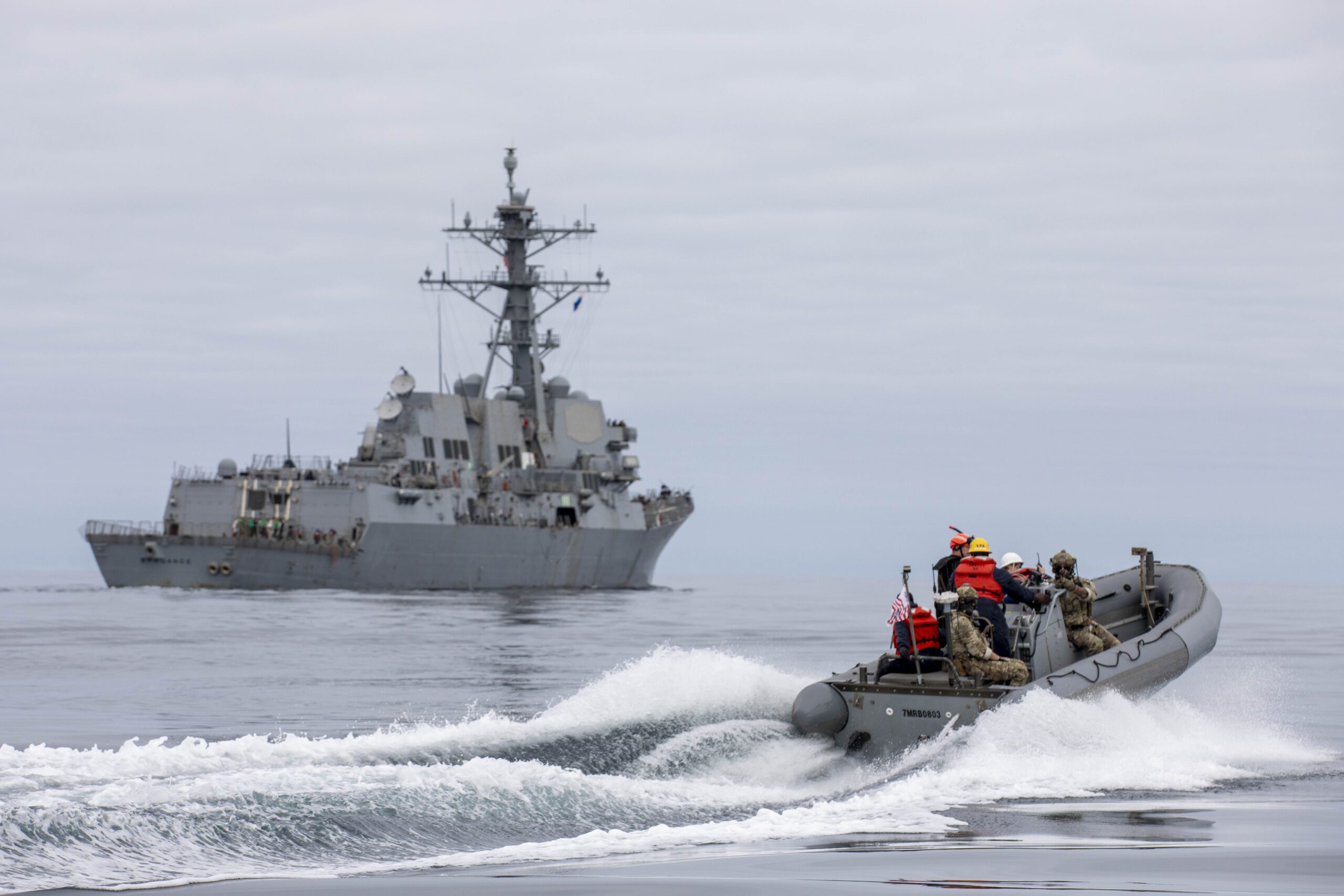The U.S. Navy’s newest Expeditionary Sea Base USS Miguel Keith is back in action after volcanic pumice from an underwater volcano became clogged up in the ship’s engineering cooling system, nearly taking out the ship’s propulsion.
The eruption of the submerged Fukutoku-Okanoba volcano, located about 800 miles southeast of Japan, occurred August 13th and spewed pumice stones that drifted as far as Okinawa, where the ship was operating in late October.
“According to reports, this was the biggest underwater eruption Japan has seen since World War II,” said Capt. Troy Fendrick, Miguel Keith’s commanding officer. “Almost three months later we still experienced the impact, as the ship developed issues in the engineering plant’s cooling system. It took a whole-team effort of several days to avoid a total loss of power and propulsion at sea, and I could not be more proud of the crew’s efforts to keep the ship in the fight.”
The pumice apparently clogged strainers on the ship’s sea chests, which suck in seawater for firefighting, equipment cooling, and other services. Some particles were small enough to pass through the strainers into critical propulsion systems, Fendrick said.
The engines on each shaft even had to be shut down for almost four days at a time while the crew disassembled and thoroughly cleaned vital equipment.
“Over time, pumice ingestion plagued virtually the entire engineering plant,” Fendrick said. “Clogs caused high temperatures in both port and starboard coolers, which provide vital cooling water to all propulsion and electrical generating equipment. All of our stern tube seal pumps were also clogged, as well as our evaporators, which we use to make fresh drinking water for the crew.”
Eventually, the problem was resolved the ship got back to its normal duties in time to participate in Exercise Coral Dagger in November near Okinawa.
“Our hybrid crew worked exhaustively for countless hours, doing what is typically a depot-level job,” said Fendrick. “It’s something we would normally do in port, with help from an outside repair activity. The fact that our crew was able to accomplish this at sea in such a short time, keep us on station ready to ‘fight tonight,’ and avoid costly damage and repairs, speaks to our warrior toughness, and our ability to adapt and sustain ourselves in the face of adversity.”
USS Miguel Keith (ESB 5) was only recently commissioned in May. The ship is the Navy’s third Expeditionary Sea Base (ESB) variant of the Expeditionary Transfer Dock platform (ESD). The ESB’s were previously known as Afloat Forward Staging Base (AFSB) in the Mobile Landing Platform (MLP) program and offer flexible platforms for logistics movement from sea to shore in support of a broad range of military operations.
Sign up for our newsletter

 Join The Club
Join The Club











